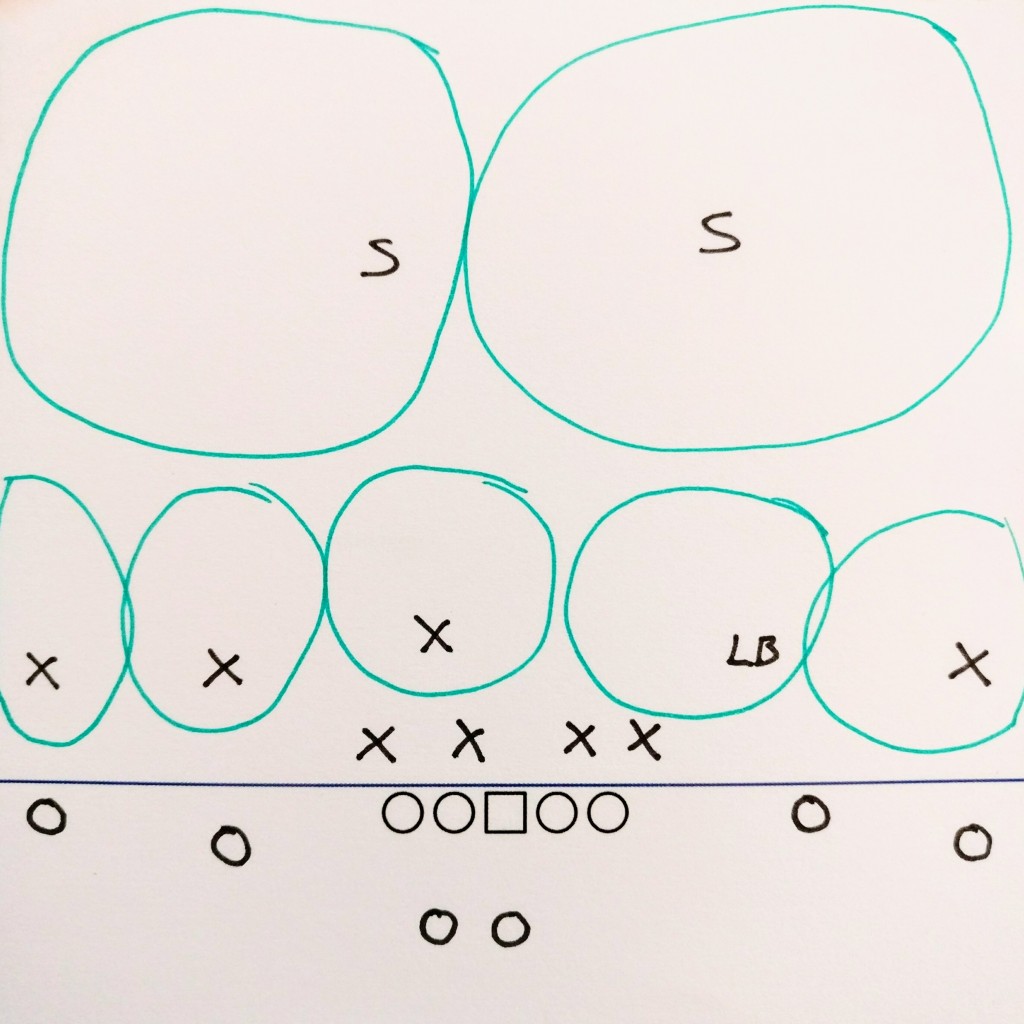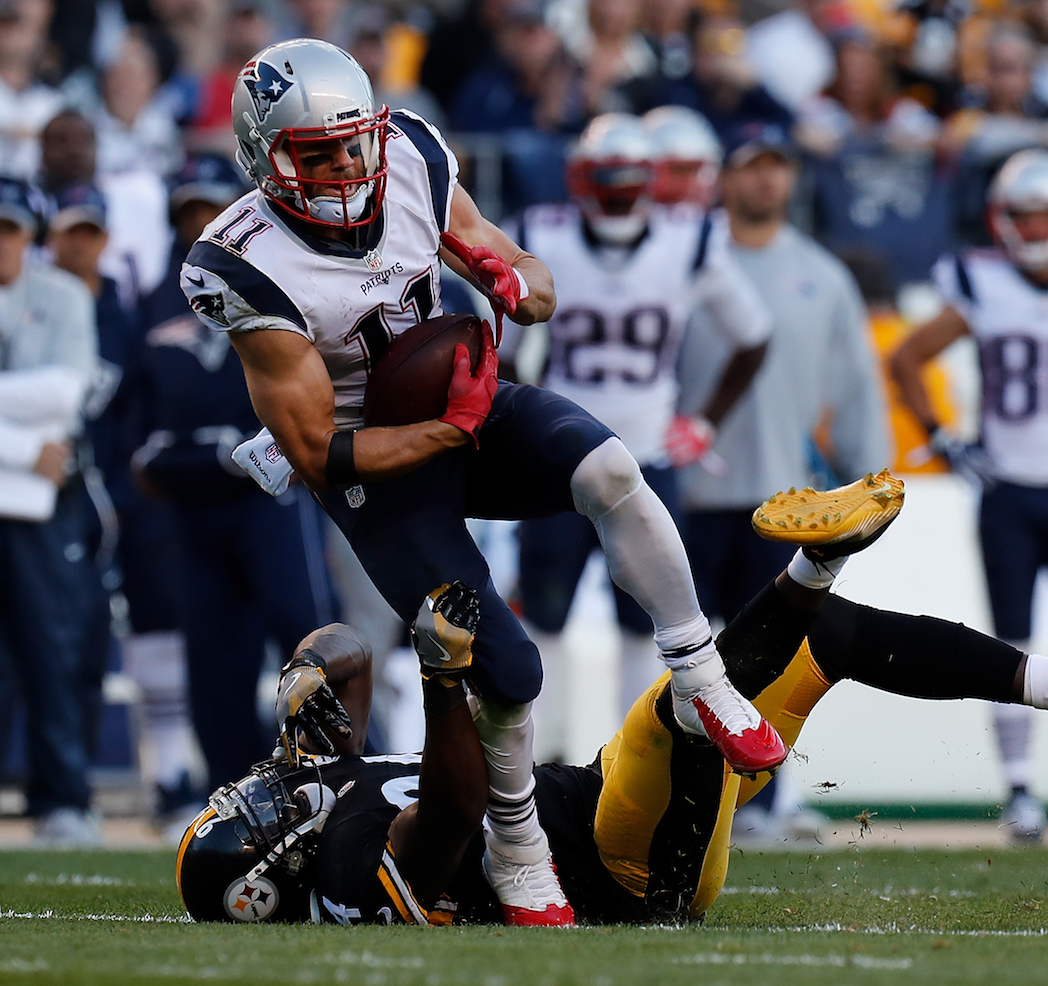The AFC Championship Game represents another excellent matchup in what should be a great Sunday of football this week. Like every game but one in these playoffs, it's a rematch of an earlier game in the regular season, but with a key difference at QB for the Pittsburgh Steelers, who will have Ben Roethlisberger under center instead of backup Landry Jones.
For that reason, I don’t want to focus too heavily on that side of the ball, because between that change and the improvement of the Pittsburgh offensive line, this is a vastly-improved Steelers offense that will head into Foxborough.
The other side of the ball, though, presents a really interesting schematic battle, with the Patriots' offense running up against a Steelers' defense that seems to play well despite some inconsistent play from its component parts.
There may not be another defense in which the individual players demonstrate such a high variance in performance, and yet it often remains unexploited over the course of a game.
The Patriots' offense, though, is excellent at identifying matchup advantages and targeting them relentlessly throughout the game, and they may find one in specific areas within this Pittsburgh defense that the last meeting can illustrate.
Pittsburgh’s linebackers are athletic, quick and have range. They can have a huge impact in the game, and they each have the ability in coverage to match up with receivers that many linebackers don’t. They can also be moved out of position in coverage because of the nuances in technique within the Steelers' coverage schemes.
Pittsburgh is largely a zone team when it comes to coverage, playing some combination of cover-3, cover-2, cover-4 or cover-6 (all zone coverage shells) on 76 percent of their defensive snaps.
On the chalkboard, that involves each defender being responsible for an area of the field, either short or deep, and those zones combine in patchwork to cover the entire field in some way.

This is, roughly speaking, what cover-2 should look like as it’s traditionally thought of against the formation New England deployed in the first meeting with Pittsburgh earlier in the season late in the first quarter.
The way in which teams defeat zone coverage played with this traditional technique is in targeting the little gaps or creases between the zones, and devising route combinations and plays that flood specific zones, asking a defender to effectively choose which receiver he closes on and targeting the other one.
Where things get interesting with the Steelers, however, is the way in which they play zone coverage. Instead of the traditional technique of eyes on the QB and maintaining a fairly rigid positioning within the zones, Pittsburgh plays a lot of man-within-zone, meaning they will effectively play man coverage on the first receiver to threaten their zone, and then have to peel back to take any secondary threat should one emerge.
Against certain offenses, this works extremely well, because QBs want to get the ball out of their hands as fast as possible, and when they read through their progression, they are throwing to the first open guy they see. If you are able to bottle that guy up for short gains on every play, you are asking an offense to execute extremely efficiently to have success over the game.
The issue, though, comes if an offense is prepared to wait for the second target to uncover, or worse still if they are capable of deliberately moving your underneath coverage with route combinations that open up space for a deeper receiver in behind them. If you think of zone coverage as a series of nets designed to cover the entire field, when one of the linebackers jumps out of the carefully arranged matrix to chase after the first route he sees, it creates a hole in the coverage that a secondary route can exploit, and puts enormous stress on those players to recover if the QB is able to target that secondary pattern.
Instead of players sticking rigidly to this pattern, though, the Steelers employ a lot of man coverage within these zones, and it can be exploited, and was in a couple of different ways the first time the two teams met this season. Early in the game, the Patriots scored a touchdown on a screen pass to RB James White where much of the underneath coverage was run off, leaving LB Lawrence Timmons with too much to do against the offensive line releasing to block for the screen.
Later in the game, they saw the underneath coverage again manipulated, this time to open up space to hit TE Rob Gronkowski behind them on a dig route.
Here the Patriots send two underneath receivers on shallow crossing patterns, which moves both linebackers and causes some minor chaos in the middle of the field. What is of larger importance, though, is the space moving those linebackers created in behind them for the in-breaking route from Gronkowski.

Against traditional cover-2, this throw would have been far tighter, needing to navigate its way between linebackers underneath that were squeezing the window, but because the Steelers play this technique, the Patriots were able to move those linebackers out of the way, effectively erasing the usual obstructions to this throw and massively increasing the size of the throwing window.
In the first meeting, Tom Brady and the Patriots were typically happy to target that first receiver almost every time and pick up short gains by matching up their quick wideouts against Pittsburgh’s linebackers, but after studying the tape, they may get more creative with deliberately manipulating the coverage and create more big plays in behind the first line of Pittsburgh’s coverage.



 © 2024 PFF - all rights reserved.
© 2024 PFF - all rights reserved.